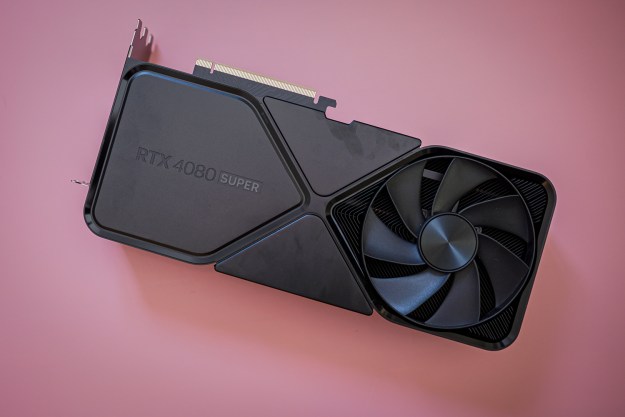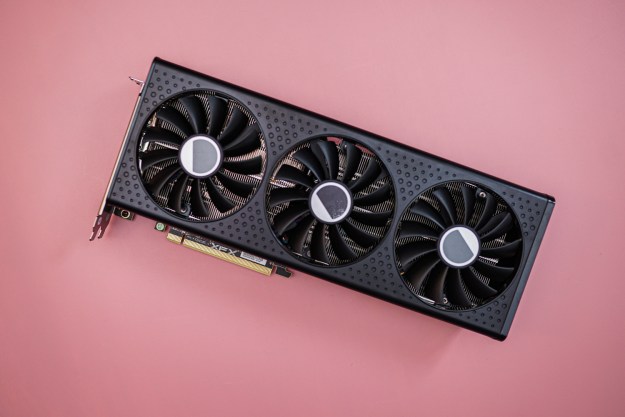Nvidia’s new RTX 4070 Super feels like a direct response to AMD. After losing in some rankings to AMD’s RX 7800 XT, this Super refresh appears like Nvidia’s bid to reclaim the performance crown among the list best graphics cards. Which is the better card for your next PC build, though?
We’ve tested both GPUs extensively, which you can read about in our RTX 4070 Super review and RX 7800 XT review. Here, we’re putting the cards head-to-head to see which GPU comes out on top. And it’s a much closer battle than we expected.
Pricing and availability
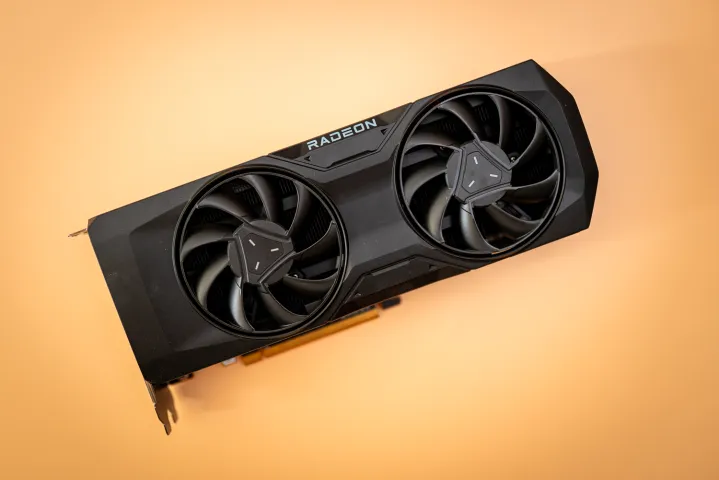
Nvidia’s RTX 4070 Super is the newer GPU between these two, and will launch on January 17 for a list price of $600. There are models available at that price, but you’ll commonly find overclocked versions for slightly more. We’ve seen prices around $650, with some of the most extreme models pushing up to $700.
Still, you only need to spend $600 to get an RTX 4070 Super. Stock is plentiful, at least at the time of writing, so we don’t expect prices to shoot up out of nowhere.
The RX 7800 XT is in a slightly different position. The card released late last year for a list price of $500, but it didn’t stay at that price for long. Due to how the card performed compared to the base RTX 4070, most models rose to around $550. Nvidia’s Super model is reversing that price increase, but most models are still listed above list price.
At the time of writing, we only found one model available at $500. Most others are listed between $530 and $550. It’s hard to say where prices go from here. With the RTX 4070 Super at $600, it’s hard to imagine the RX 7800 XT will drop below its original list price. For now, we’re looking at a price difference of somewhere between $50 and $100, with the RTX 4070 Super being the more expensive card.
Specs
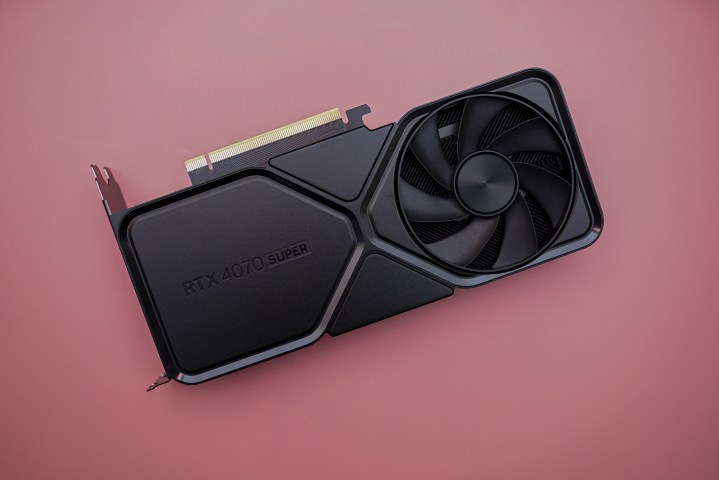
It’s not worth comparing the core specs of an AMD and Nvidia graphics card. AMD and Nvidia count their cores differently, and those cores interact with clock speed differently. Nvidia has twice as many cores, and even a slightly faster clock speed. But that doesn’t actually mean much of anything when it comes to performance.
The two specs we can compare are power and memory. In terms of power, Nvidia definitely has an edge. The RTX 4070 Super has a Total Graphics Power (TGP) of 220 watts, while AMD comes in higher at 263W. That said, AMD uses two traditional 8-pin power connectors while most RTX 4070 Super models opt for a 12VHPWR 16-pin connector. If you don’t have an ATX 3.0 power supply, that means you’ll need to use an adapter with more RTX 4070 Super models, which can be a bit unsightly in a case.
| RTX 4070 Super | RX 7800 XT | |
| GPU | AD104 | Navi 32 |
| Interface | PCIe 4.0 | PCIe 4.0 |
| Cores | 7,168 | 3,840 |
| Boost clock | 2,475MHz | 2,430MHz |
| Memory | 12GB GDDR6X | 16GB GDDR6 |
| Memory speed | 21 Gbps | 19.5 Gbps |
| Memory bus | 192-bit | 256-bit |
| TDP | 220W | 263W |
Still, Nvidia comes out ahead with lower power and better efficiency overall. AMD’s win comes in memory. The RX 7800 XT comes with 16GB of GDDR6 memory on a 256-bit bus. AMD also packs in 64MB of its Infinity Cache, which improves the overall effective bandwidth of this memory interface.
Nvidia took some notes from AMD with the RTX 4070 Super. It boasts a bit of extra cache — 48MB of extra speedy L2 cache, to be exact — but it comes with a thinner bus and less overall capacity. Nvidia squeezes in 12GB of GDDR6X memory on a 192-bit bus. Nvidia’s effective bandwidth is lower, but that shouldn’t be much of an issue with the card.
Between the two, AMD is definitely better equipped to handle the VRAM demands of modern games, particularly at
Performance

Both the RTX 4070 Super and RX 7800 XT are built for 1440p, though with enough juice to power
In fact, the RX 7800 XT actually wins in a few titles, namely Cyberpunk 2077 and Resident Evil 4. The margins are small for AMD, but it’s important to keep in mind that the RX 7800 XT is anywhere from 8% to 17% cheaper than the RTX 4070 Super depending on the model you buy.
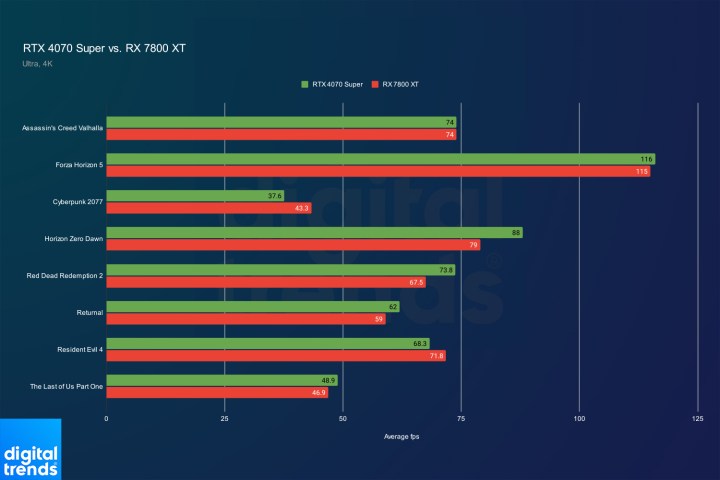
That’s 1440p, but what about
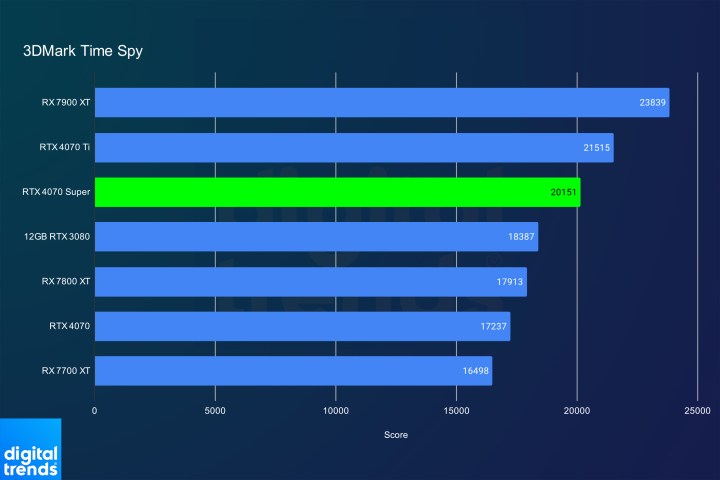
We need some context here, though. In 3DMark Time Spy, the RTX 4070 Super is around 12% ahead of the RX 7800 XT. We can only test so many games, and we’re mostly focused on the newest, most demanding titles. Overall, we expect the RTX 4070 Super to be between 5% and 10% ahead of the RX 7800 XT.
AMD still wins in that battle due to the RX 7800 XT’s price, but Nvidia has two feathers in its cap:
Ray tracing and upscaling

It shouldn’t come as a surprise, but the RTX 4070 Super shoots ahead when you factor in
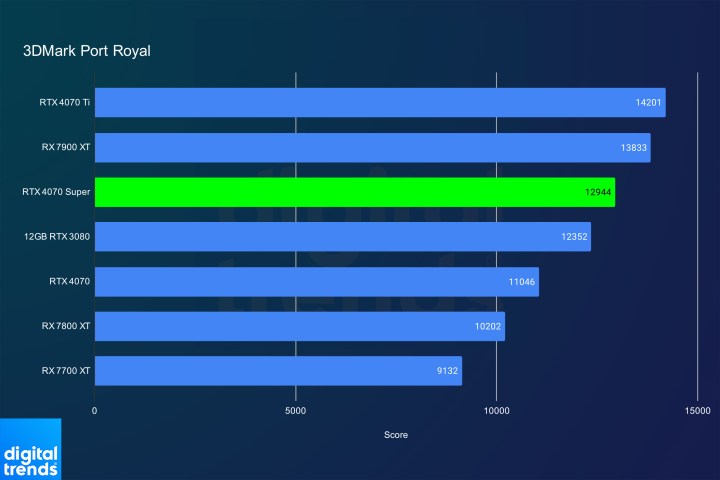
The bigger factor here isn’t
For its part, AMD has FSR 3 for the RX 7800 XT. The list of FSR 3 games is much smaller, and the quality isn’t as good as DLSS 3. However, AMD also offers its Fluid Motion Frames feature through the driver. This applies frame generation to any game. It doesn’t work nearly as well as DLSS 3, especially through the driver, but it’s a shortcut to higher performance if you need it.
Considering the package the RTX 4070 Super offers with DLSS 3.5, it definitely has an edge. You don’t need to use the full suite of features in every game, but it makes a world of difference when those showcase games like Alan Wake 2 come along. AMD takes a wide approach with support for basically any game, though not enough quality or performance to make a difference where it really counts.
Which should you choose?

It’s a tough choice between the RTX 4070 Super and RX 7800 XT. Both are excellent
The card is more expensive, but Nvidia makes up for it with not only higher overall performance, but also DLSS 3.5 and far better
AMD’s card still has its place, however, particularly if you don’t need those showcase experiences like Alan Wake 2 and Cyberpunk 2077‘s path tracing mode. If you’re more concerned with overall performance across a wide swath of games, the RX 7800 XT gets most of the way there — and it’s a heck of a lot cheaper.
Editors' Recommendations
- I tested Intel’s XeSS against AMD FSR — and the results speak for themselves
- 5 GPUs you should buy instead of the RTX 4070
- I tested the RTX 4070 against AMD’s new RX 7900 GRE — and it’s not pretty
- Using an RTX 3060? Here’s the GPU to upgrade to next
- Why I’m feeling hopeful about Nvidia’s RTX 50-series GPUs




